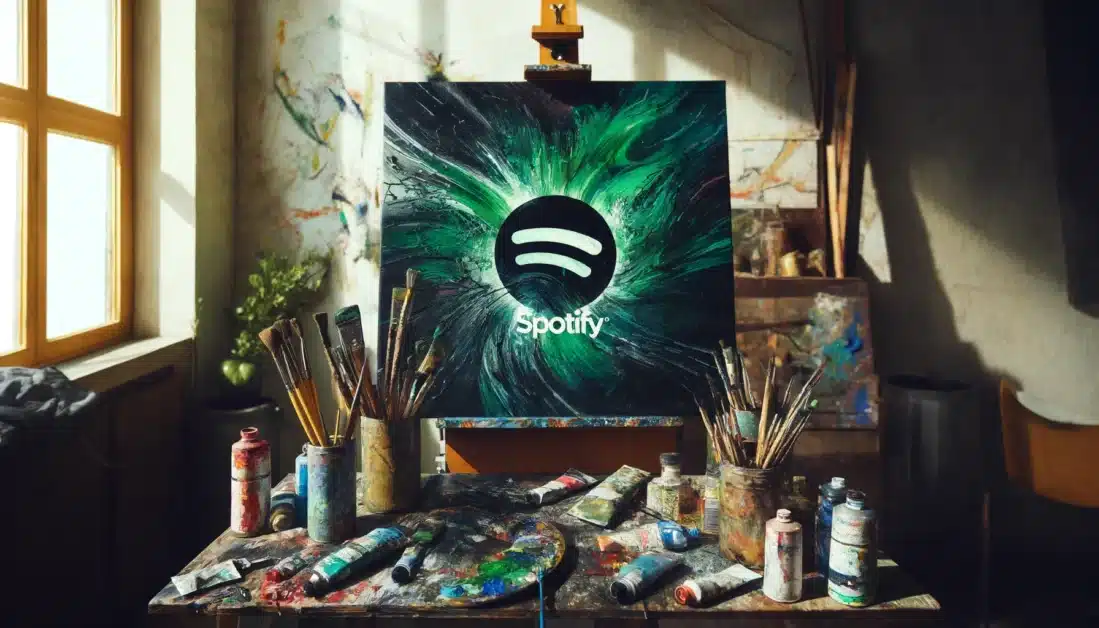Hello, design lovers! Have you ever wondered why Spotify’s branding is so distinctive and fresh? All thanks to the carefully selected color palette. Colors are a key part of branding and help to establish an identity which users can recognize instantly. This article explores Spotify’s colour palette. We’ll look at the colors used, their reasoning for choosing them, and ways you can use these colors in your own design. Let’s get started!
Short Answer
Spotify’s branding features a distinct color scheme featuring Spotify Green (#1DB954) in the first color. It’s with secondary colors including charcoal, white, black grey, light grey. The color palette is modern and gives the brand a unifying style. In the beginning, Spotify utilized a more vibrant fluorescent green. However, then it changed to the current green for a more refined and appealing appeal to users. The article also provides insight about the use of these colors in design as well as their psychological effects.
Overview of Spotify Color Palette
What is the exact color palette of Spotify? Spotify has a set of colors which reflect the brand’s modern and vibrant personality. Take a look at the primary colors and secondary colours:
Primary colors:
-
- Spotify Green: #1DB954
Secondary Colours:
-
- White: #FFFFFF (RGB: 255, 255, 255)
-
- Black: #191414 (RGB: 25, 20, 20)
-
- Charcoal: #212121 (RGB: 33, 33, 33)
-
- Grey: #535353 (RGB: 83, 83, 83)
-
- Light Grey: #B3B3B3 RGB: 179 179 179.
The colors create the sleek, cohesive look for which Spotify is famous.
The Evolution of Spotify Color Palette
Did you know Spotify’s colour palette didn’t always look the way it looks now? Spotify’s colors looked a little different when it first launched. Over time, Spotify has refined their palette to reflect the growing and evolving nature of the brand.
Spotify started out with a neon-green that was brighter. As the platform matured they changed to a subdued but still vibrant green color (#1DB954) in order to match a professional and user-friendly look. This made the brand look sophisticated and approachable.
Spotify Colors: A Detailed Analysis
Take a look at the colors in Spotify’s palette.
Spotify Green (#1DB954, RAL: 29, 185 84)
-
- Use: This is the cornerstone for Spotify’s brand. This is used in the logo and app icons.
-
- Green represents growth, innovation, and freshness. This is perfect for a platform that is always changing.
White (#FFFFFF RGB: 255 255 255)
-
- Use: Used as a backdrop to create a space that is clean and clear, allowing other elements to stand out.
-
- White is a good contrast and balance color that makes it easy to navigate.
Black (#191414 – RGB: 25, 20, 10):
-
- Use: Text and backgrounds can be used to create a sleek modern look.
-
- Black is a sophisticated and elegant color that ensures readability.
Charcoal (#212121; RGB: 33 33 33)
-
- Use: Adds depth to interfaces, commonly used in footers and sidebars.
-
- Charcoal is a neutral but strong color that adds strength to any color scheme.
Grey (#535353 RGB: 83 83 83) and Light Grey #B3B3B3 RGB: 175, 179, 194:
-
- Use: Secondary text, icons and backgrounds.
-
- The greys are important for maintaining a minimalistic, uncluttered appearance.
How Does it Work?
The tool will then assign you a palette of colors based on the listening habits that you have. Four possible results can be obtained:
-
- Red palette You listen to a lot of energetic songs
-
- Pastel color palette You mostly listen to energetic and danceable songs
-
- Yellow palette : You listen to a lot of happy and cheerful songs (high-valence)
-
- Orange palette You mostly listen to danceable songs
Color Palettes: Different Types
Understanding color palettes will help you to better understand Spotify’s choices, and how similar strategies can be applied in your design. Here are some examples of common color palettes.
1. Monochromatic Palette
Monochromatic palettes use various shades, tones, and tints of one color. It creates a harmonious and cohesive look that is perfect for designs.
Example:
-
- Palette with various shades of green ranging from minty light to forest green.
2. Analogous Palette
A color palette that is analogous is made up of colors next to each on the color wheel. This type of color palette is often pleasing to the eyes and reflects nature.
Example:
-
- Colours such as blue, blue-green and green.
3. Complementary Palette
On the color wheel, complementary colors are located opposite one another. This palette is perfect for creating a high-contrast and vibrant look.
Example:
-
- Combine blue with orange or red with green.
4. Triadic Palette
Triadic color palettes use three colors evenly distributed around the wheel of color. This creates a vibrant and balanced color scheme.
Example:
-
- Red, yellow and blue combined.
5. Tetradic Palette (Double Complimentary)
This palette consists of four colors, two complementary pairs. This palette is great for creating colorful, rich designs.
Example:
-
- Use red, green, orange, and blue together.
6. Split-Complementary Palette
Split-complementary palettes use one base color, and two colors that are adjacent to the complementary color. This type provides high contrast without the tension that comes with a complementary color palette.
Example:
-
- Blue as a base with yellow-orange, red-orange, and orange accents.
Use these palettes to match Spotify’s colors
Spotify uses a monochromatic color palette that is centered on its signature green. It also uses a complementary color scheme, balancing out the vibrant green tones with neutrals like black, grey, and white. This combination makes the green stand out without being overwhelming, while maintaining a modern and clean aesthetic.
Example:
-
- Spotify Green (#1DB954) combined with black (#191414), and white (#FFFFFF), creates a sleek and professional look.
The Psychology of Spotify Colors
Colors don’t just look good, they can evoke feelings and perceptions. Spotify’s colors are a powerful tool.
-
- Green: Promotes relaxation and creativity, improving the user’s experience.
-
- White: This color promotes clarity and simplicity. It makes the app more user-friendly.
-
- Black and Charcoal – Adds a professional and sleek look to the app, giving it a premium feel.
-
- Greys: This neutral color keeps the design looking modern. It also allows primary elements to be more prominent.
Application of Design
You can use the color palette of Spotify in your design. You can use these tips to create your own color palette.
-
- Primary Use: Use Spotify Green to highlight buttons, focal points, and highlights.
-
- Green and white or black contrast to bring out the best in your elements.
-
- Use grey or charcoal backgrounds to make the interface readable.
-
- Text: Use black or dark gray for text to make it easier to read.
Here are some examples of practical examples.
-
- Website Design: Use Spotify green for buttons that call to action against a grey or white background.
-
- App Design: Use a black background or a charcoal one with accents of green to create a sleek, modern look.
Tools and Resources
Here are some resources and tools to help you with your design process:
-
- Adobe Color: Create color palettes and save them.
-
- Coolors: Explore palettes and generate color schemes.
-
- Canva: Create designs with color templates already pre-set.
-
- Spotify Brand Assets – Access official logos, guidelines and more on the brand pages.
FAQs
What is the exact HEX Code for Spotify Green?
The HEX for Spotify Green is 1DB954.
Can I use Spotify colors in my own projects?
You can certainly use these colors as inspiration. However, if you plan to use them commercially, be sure to follow the brand guidelines.
How can I make sure my design is compatible with Spotify’s colors and ensure that it is easily accessible?
To ensure that text and elements can be read, use high contrast combinations such as green or black on white.
Conclusion
You’ve now learned all about Spotify’s colour palette. Understanding these colors, and how to use them in your designs can make them more visually appealing as well as aligned with an established brand. Let your creativity run wild and try out these colors!
Subscribe to our newsletter for more tips and design insight. Do you have questions or would like to share some of your designs? Please leave a comment – we’d love to know what you think




